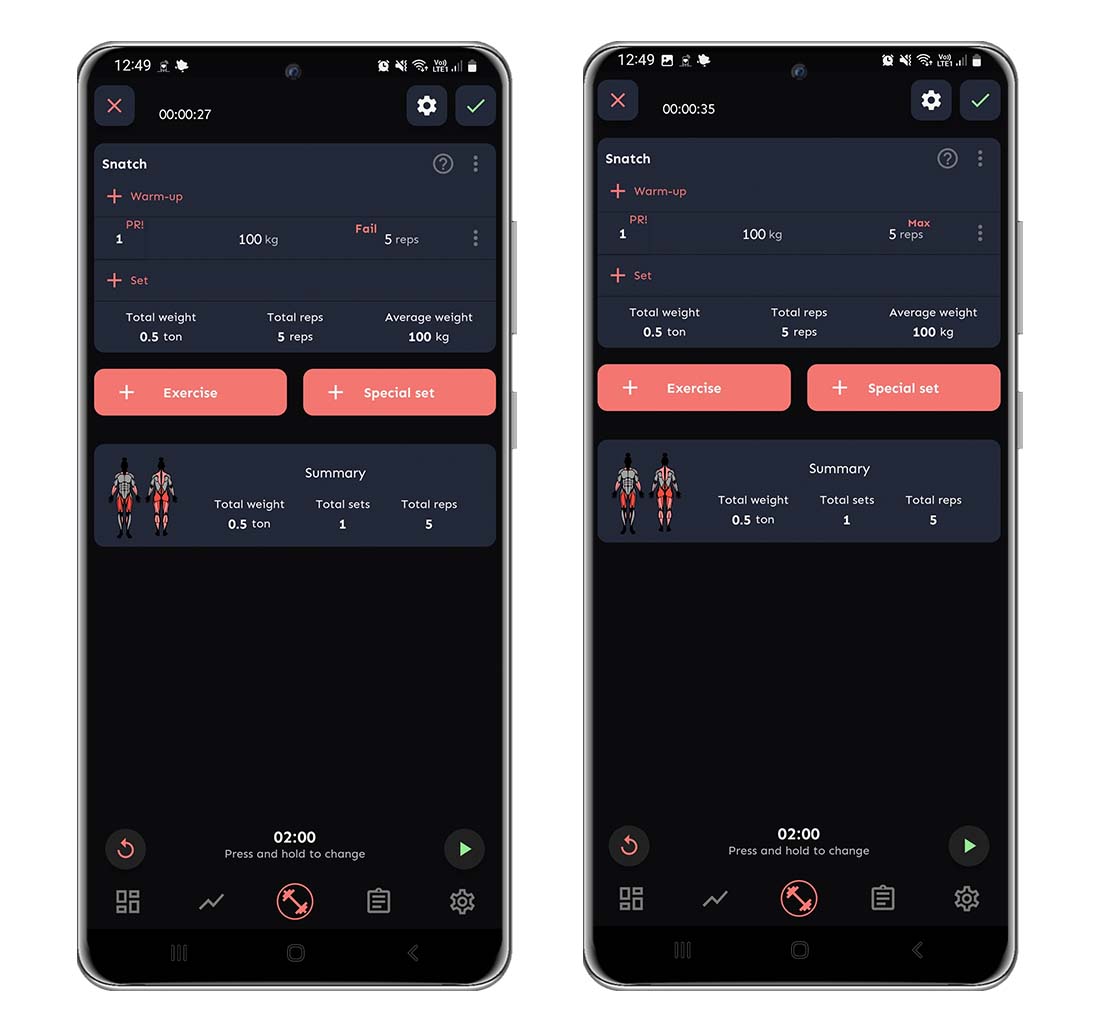As we went through in this article, it’s possible to use RPE/RiR in your training – but there are more ways to log maximum efforts if you’re not into RPE or RiR. In this article, we’ll go through the functions Max Reps and Fails.
What’s the Difference between Max Reps and Fails?
Since these are terms that might be interpreted in more than one way, we’ll start by telling you our definition of them.
Max reps are sometimes used in our built-in programs, when we want you to test how many reps you’re capable of doing in one set. You can use it in your own workouts/programs as well, and while recording your workout in real-time. If you manage to do 14 reps in one set and then fail on the 15th, you’ll enter 14 reps and mark it as max reps effort.
Fail are often used by people that do a lot of Olympic weightlifting. If you’re doing sets of 2’s in snatch, but fail the second rep on the lockout – you might want the weight to be included in your total volume, but not registered as a new PR.
This is the big difference between the two options. With max reps, you log the number of reps that you successfully lifted, not the total reps you tried to do. With fail, you log the failed repetition as well, and it will be added to your lifted weight and total volume, but not to any record lists.

How Do I Use These Functions?
As we mentioned above, max reps are possible to use while planning workouts/programs as well, but in this article, we’ll focus on real-time logging of a workout.
- In your active workout, tap the three dots to the right of the set that you want to log as fail or max reps.
- Toggle the function that you want to use, and close the pop-up menu by clicking on Close.
- By tapping the question mark next to Handle set and then Max reps/Fail – you can read more about the function.

